In spring 2024, it will be decided whether the Danish star architect Dorte Mandrup will be the winner of the Mies van der Rohe Award with her Kangiata Illorsua Ilulissat Icefjord Centre. The Icefjord Information Centre in Greenland has been nominated for Europe’s most prestigious architecture prize.
The Ilulissat Icefjord is world-famous and was inscribed on the UNESCO World Heritage List in 2004. Right there, 250 kilometres north of the Arctic Circle, lies Kangiata Illorsua, the “Ilulissat Icefjord Centre”. The Kangiata Illorsua Ilulissat Icefjord Centre is an information centre for visitors who are interested in this unique landscape and, above all, in the background to the region and its significance as a sensitive indicator of the climate.
In the exhibition “The Tale of Ice” at the Kangiata Illorsua Ilulissat Icefjord Centre, you can learn all about the history of the ice, the culture in and around the ice fjord and the effects of climate change.
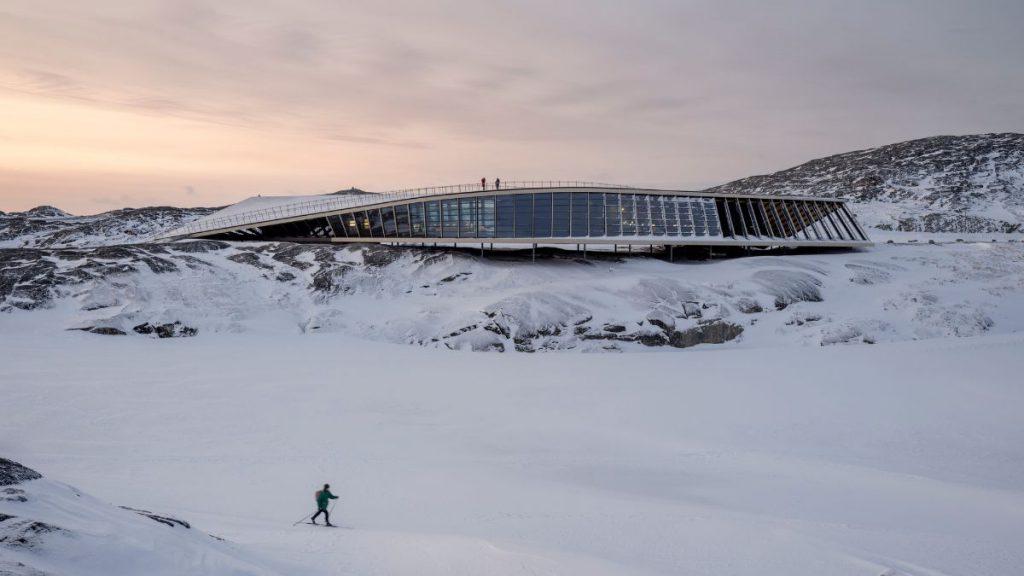
The cultural building designed by Dorte Mandrup Arkitekter has now been nominated for the Mies van der Rohe Award 2024. In spring, it will be decided whether the Danish star architect will be the next winner of the European Union’s prestigious prize for contemporary architecture.
Out of 362 nominated projects, only one from Greenland
Dorte Mandrup-Poulsen is the founder and creative director of the architecture firm. She has been nominated for the Mies von der Rohe Award several times, in 2001, 2002 and 2006, and has also received numerous awards for her work, including the Green Good Design Award and the Kunstpreis Berlin. In 2019, she was named Architect of the Year by the magazine Architektur & Wohnen.
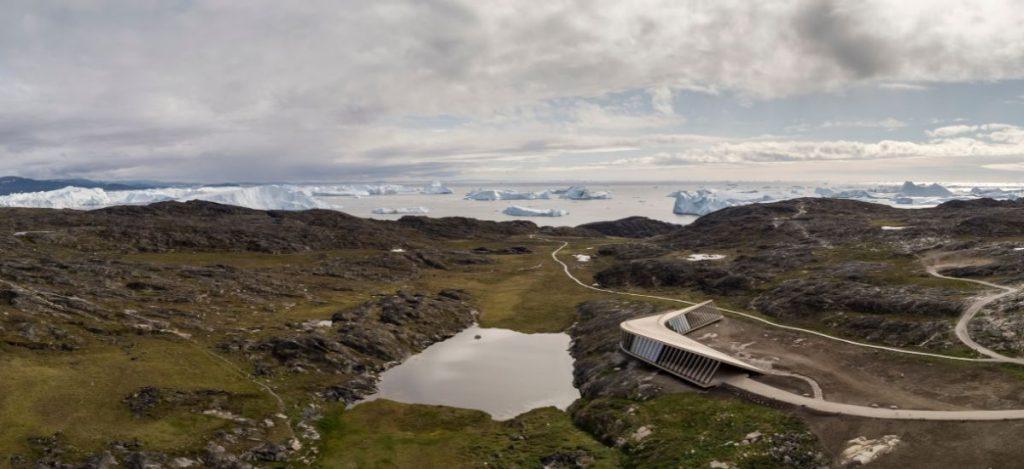
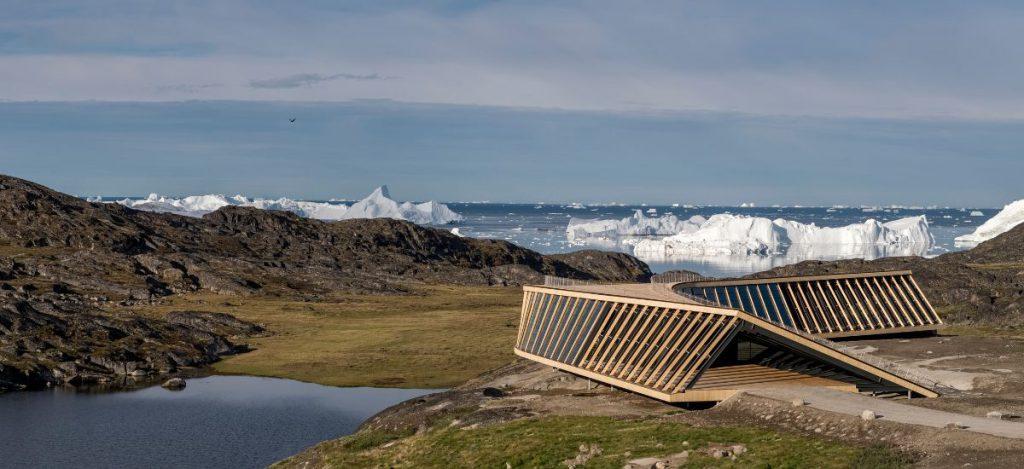
Of the 362 construction projects from 38 countries nominated for this prestigious award, 25 are from Scandinavia. The Kangiata Illorsua Ilulissat Icefjord Centre is the only project from Greenland. The Mies van der Rohe Price is endowed with 60,000 euros. In addition to the main prize, a special prize (20,000 euros) will be awarded to up-and-coming architects. The award ceremony will take place in May 2024.
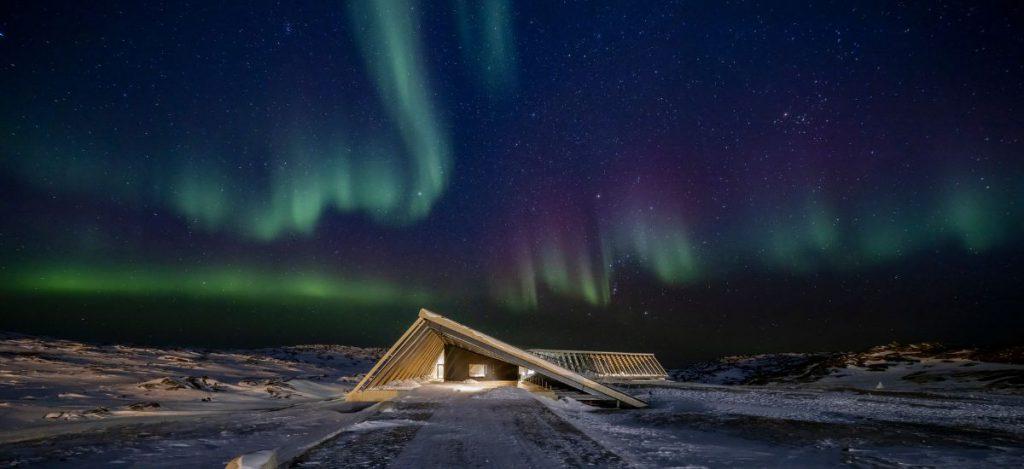
The information centre is located in the small town of Ilulissat, which has fewer than 5,000 inhabitants. It is considered a must-see if you want to visit this vast Arctic landscape. The project was financed and developed by the Greenlandic government, the municipality of Avannaata and the Danish philanthropic organisation Realdania.
Ultra-modern building on an ancient site
Overall, the Kangiata Illorsua Ilulissat aims to fulfil three objectives: To impart knowledge and promote tourism – and the centre will also serve as a meeting place for the community.
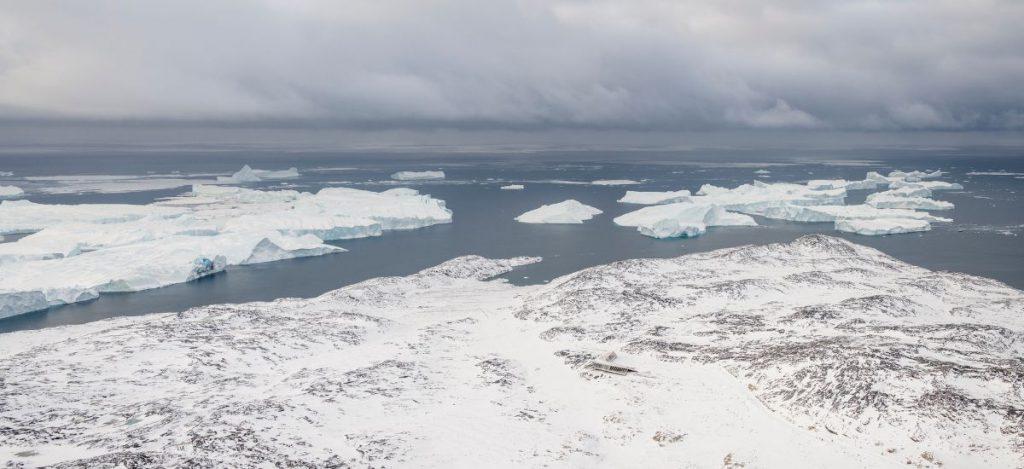
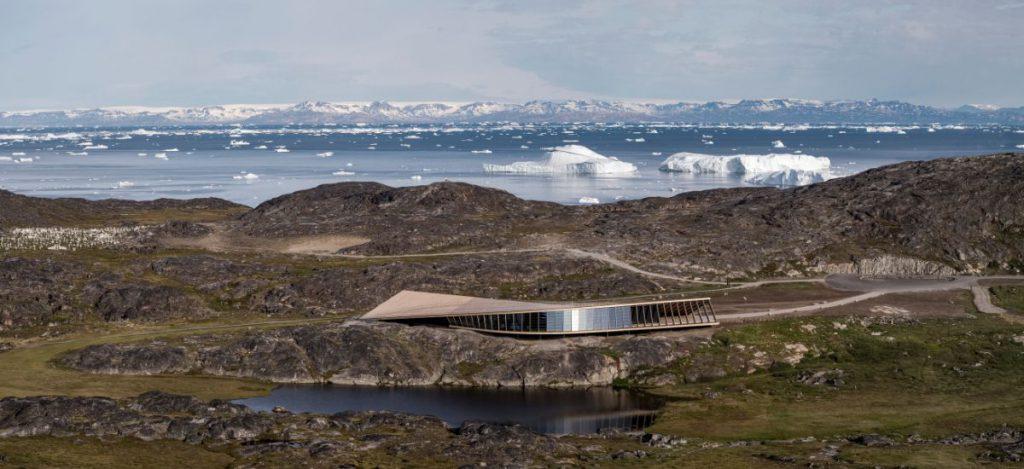
But the centre is also worth a visit in its own right: the inspiration for the design came from a snowy owl that lands on a mountain.
Building with nature – even where it’s inhospitable
For Dorte Mandrup, (almost) nothing seems impossible: even in the most surreal and possibly inhospitable regions of the world, she develops her special sensitivity for the environment and context as well as cultural traditions. The Kangiata Illorsua Ilulissat Ilulissat Icefjord Centre stretches along the rugged coast in a similar way to the flight of the aforementioned snowy owl – true to the motto “Building with nature, not against it”.
As with The Whale auf der norwegischen Insel Andøya a proven team of specialists has been brought together to create a building with an information and exhibition character that is respectfully integrated into the natural landscape.
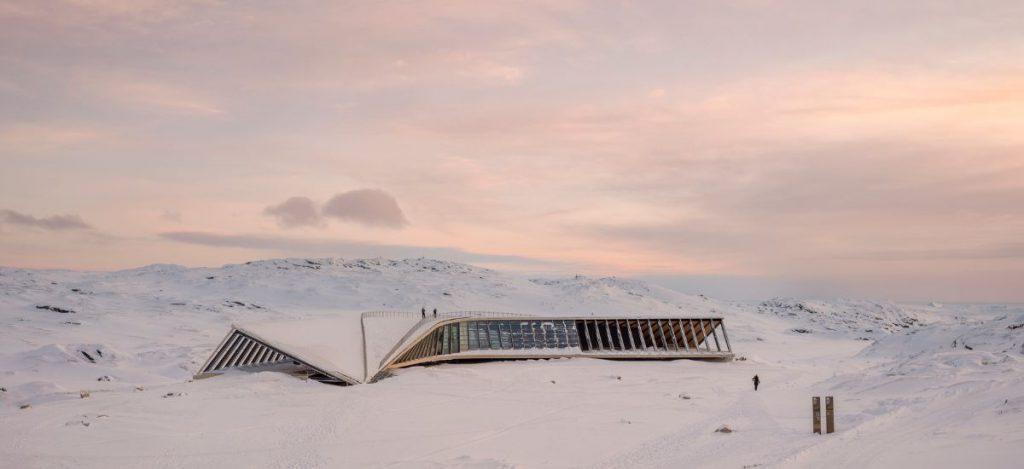
And the nature there has it all: the Greenlandic landscape is probably the perfect place on earth to become completely humble – you feel so small next to the majestic icebergs. They originate from Greenland’s Sermeq-Kujalleq glacier, the most active glacier in the northern hemisphere.
Skyscrapers made of ice
In the Bay of Disko, the Jakobshavn Isbræ, as it is also known, pushes huge quantities of ice into the sea. They pile up along the 60 kilometres or so through the fjord. You can actually watch an iceberg being formed – witness its birth, so to speak. The location of the glacier allows easy access to this breathtaking landscape.
The icebergs form an entire city of icy skyscrapers, ice giants in shades ranging from delicate blue to shimmering white, a colour palette that changes with the Arctic sunlight.
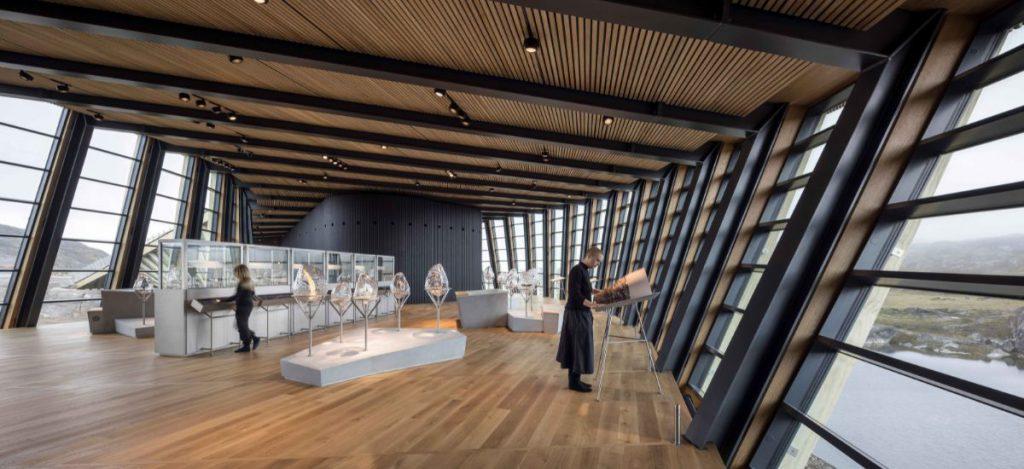
However, the dynamics of the city, which was founded in 1741, sometimes pose major challenges for the inhabitants: The changes in the formation and movement of icebergs can affect shipping routes and fishing.
And most recently, an acceleration in the breaking off of large blocks of ice has been observed due to the rise in global temperatures. The Kangiata Illorsua Ilulissat Icefjord Centre would also like to highlight these aspects.
Climatic and geographical challenges
The harsh climatic and geographical conditions posed challenges for the construction of the Kangiata Illorsua Ilulissat Eisfjord-Centre in temperatures of 30 degrees Celsius below freezing. For the same reasons, materials with a long service life had to be carefully selected for operation and maintenance. Heating was also naturally a key aspect. The building is very well insulated and is heated with CO2-neutral green electricity from the Ilulissat hydroelectric power plant.
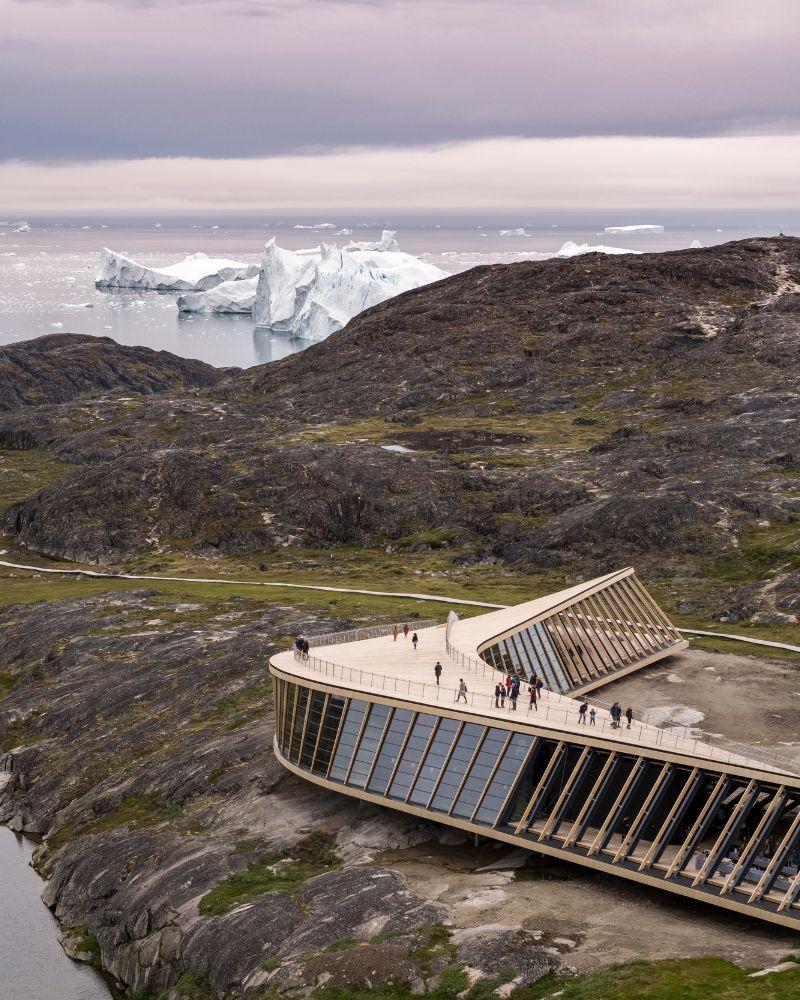
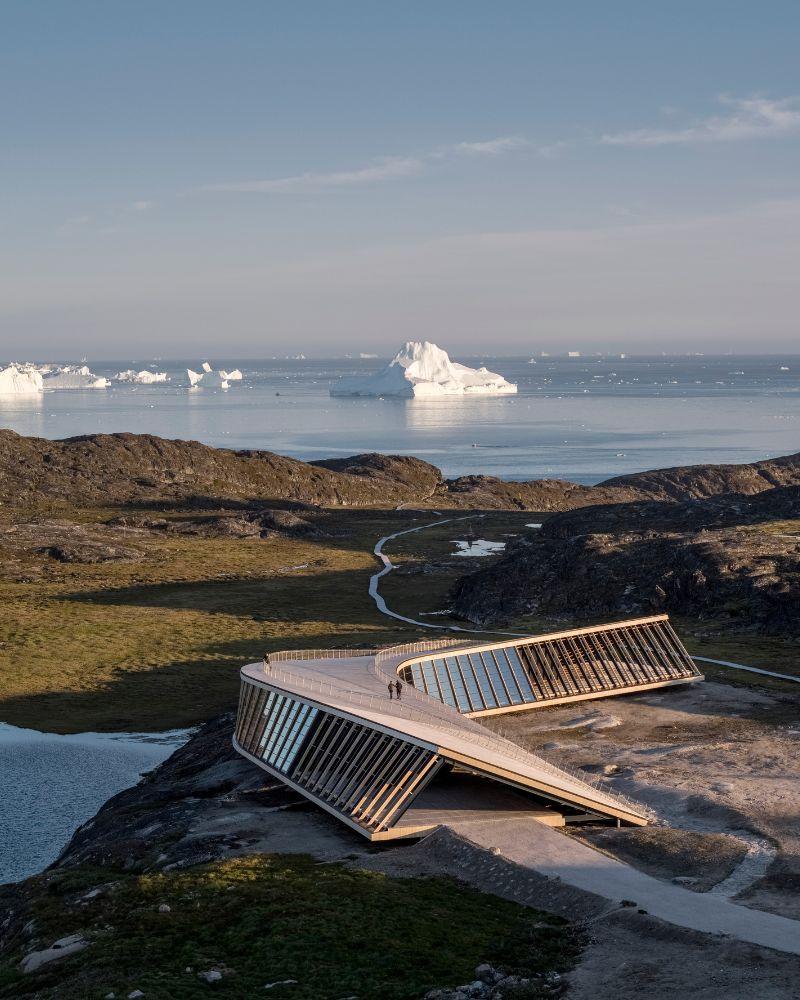
The building looks as light as a feather, as if it were floating above the fascinating, rugged terrain, like an outstretched wing gently touching the rocks. This aerodynamic shape of the building also minimises the snow load. And it gives the view of the fjord a worthy setting.
Only a minimum of concrete
The curved shape is created by geometrically different steel frames that form a double-curved roof. Thanks to the construction method using steel, wood and glass, only a minimum of concrete was used and the lightweight structure minimises the impact on the ancient foundations.
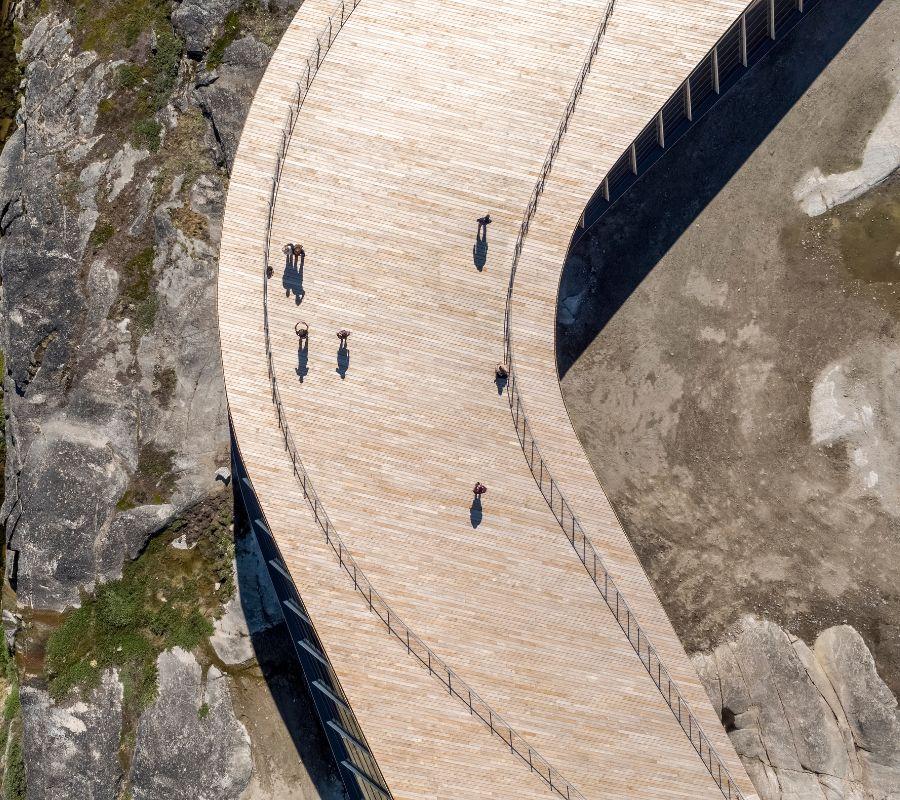
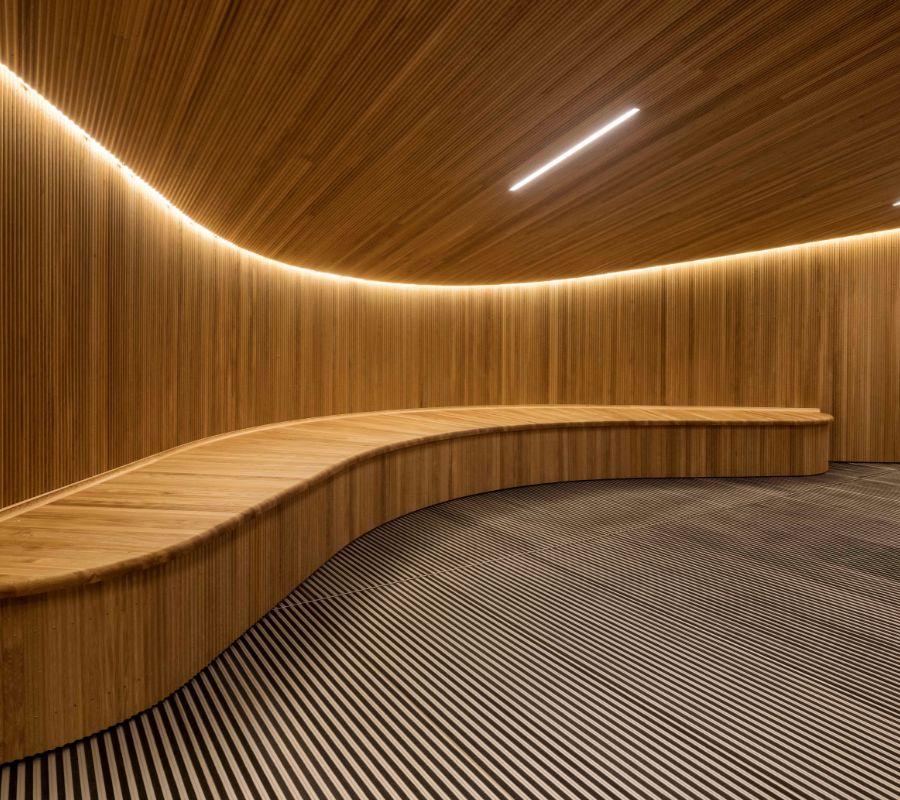
The framework of the building is spanned by a gently sloping, curved wooden promenade. It embodies the starting point of the World Heritage Trail and serves as a meeting point, informal seating area and viewing platform – for the spectacular view of the Sermermiut Valley and the ice fjord.
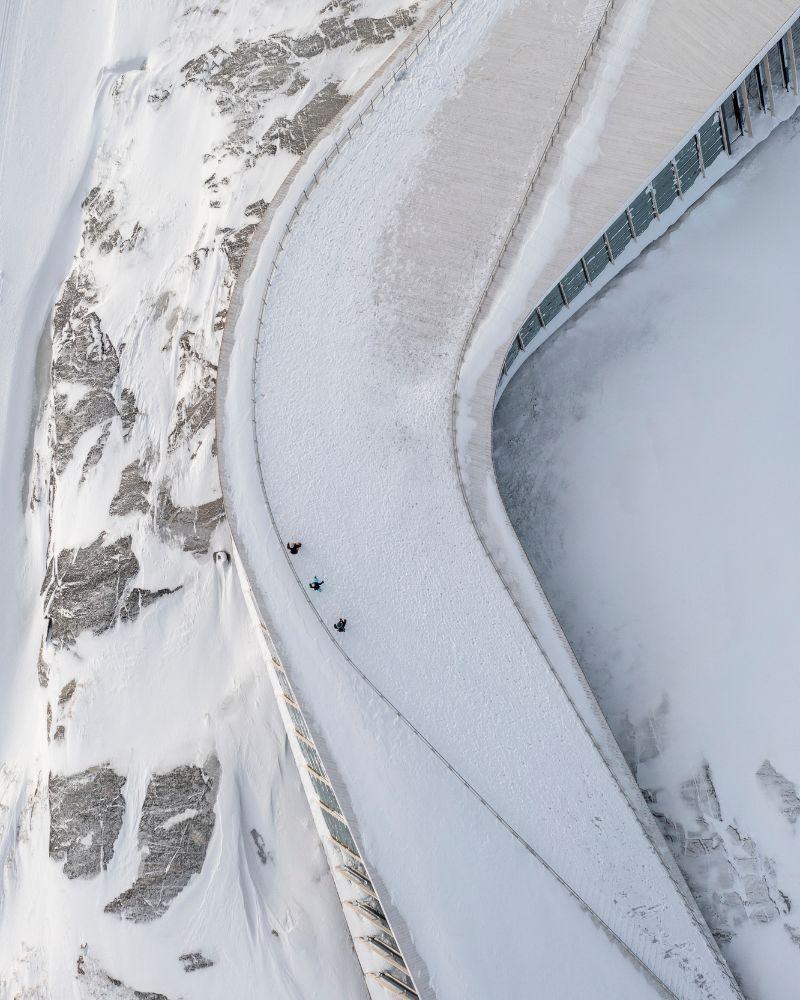
The total area of the building is 1,500 square metres. Of this, 900 are heated and 400 are used as exhibition space. The building houses an open exhibition gallery, a café, a cinema area and a shop.
The centre’s permanent exhibition entitled “Sermeq pillugu Oqaluttuaq” (“The Story of Ice”) was designed by JAC Studios Mainly digital and audiovisual elements on an area of 400 square metres inspire amazement and reflection.n.
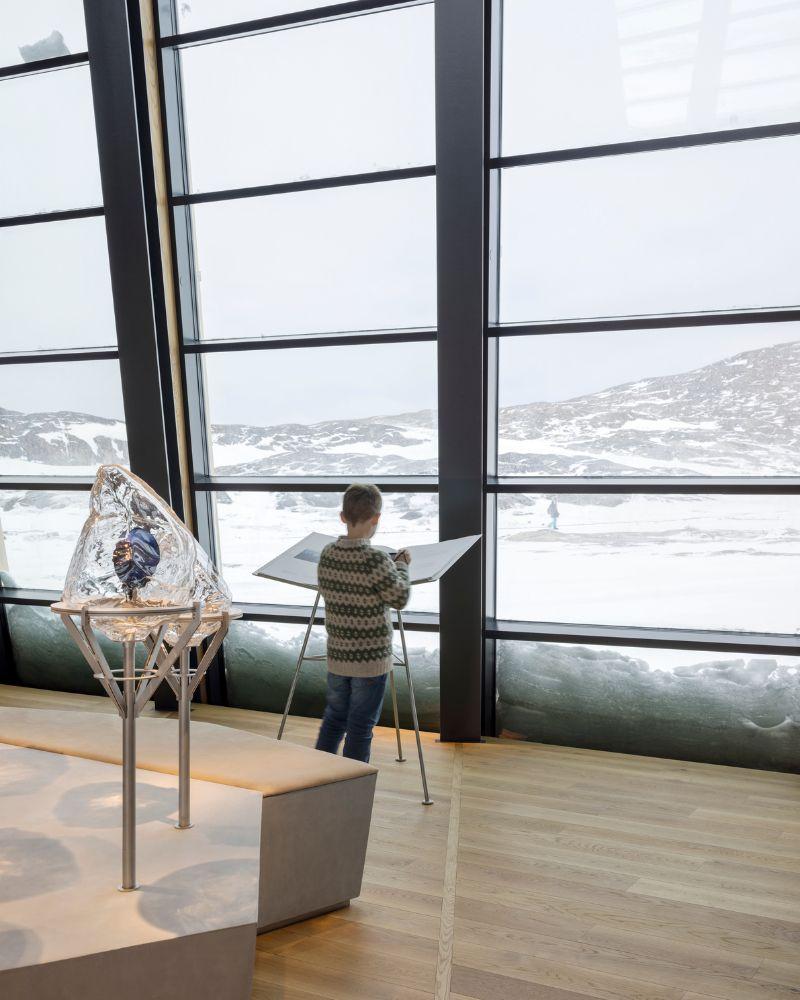
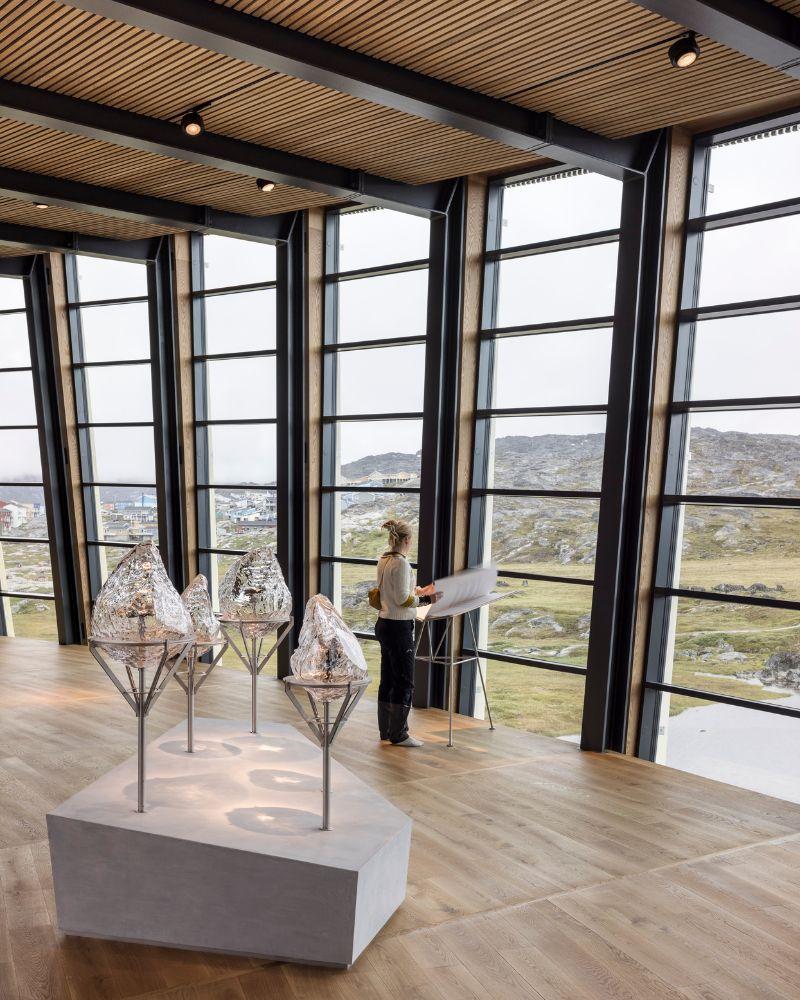
The floors, the roof, the outdoor terraces and the deck as well as a large part of the interior surfaces are made of wood, which gives the house a natural warmth. The main type of wood used is European oak, which is resistant and durable in the Arctic climate.
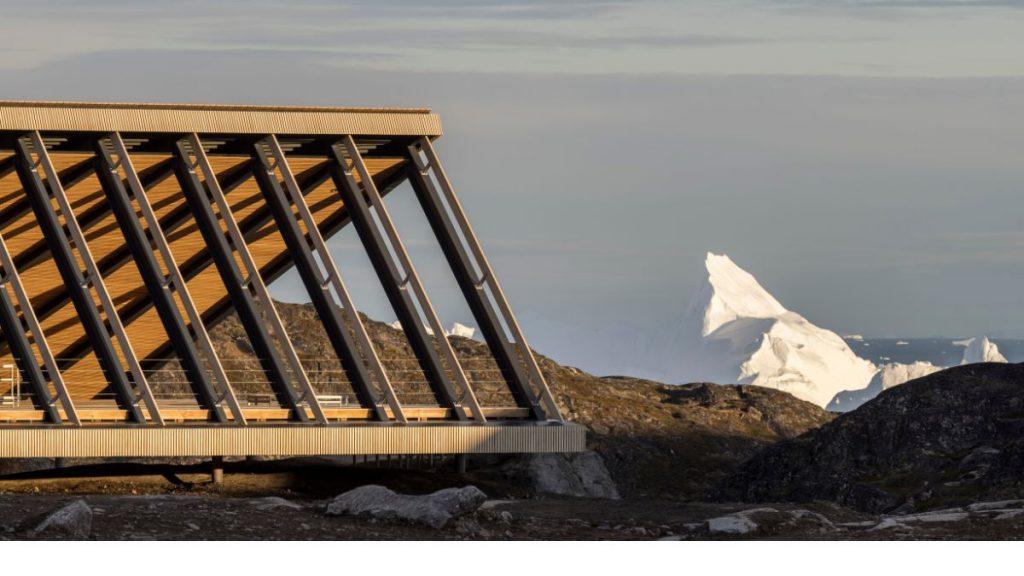
Triple-glazed, floor-to-ceiling windows enhance the airy feeling of the sparsely designed interior, which can breathe and bathe in natural light. Visitors to the Kangiata Illorsua Ilulissat Icefjord Centre, which is open all year round, experience an alternating bath of warmth and cold, light and shade, openness and protection. This is what being human is all about.
Text: Linda Benkö
Fotos: Ilulissat Icefjord Centre/Dorte Mandrup; Adam Mørk


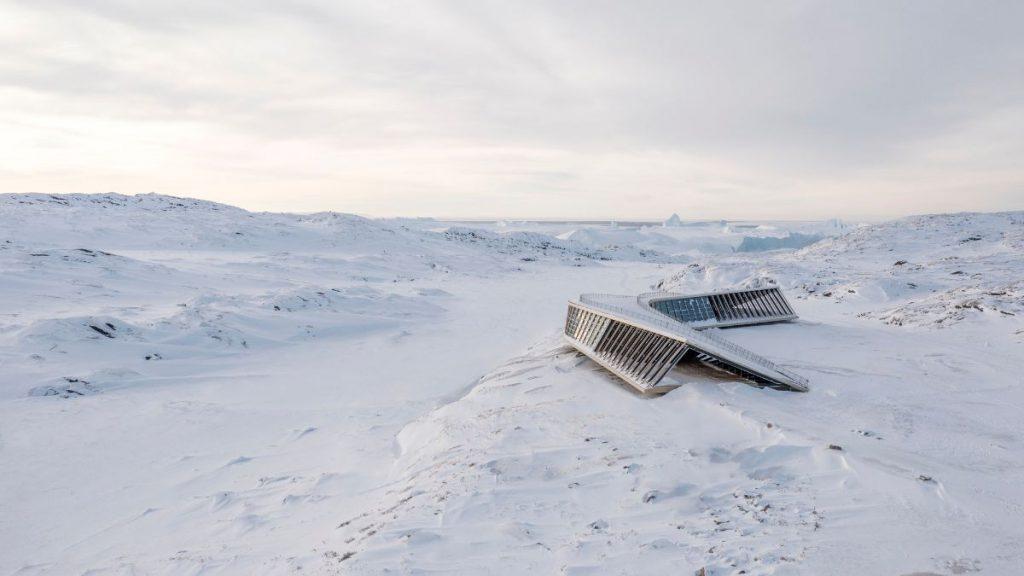
iThere are no comments
Add yours